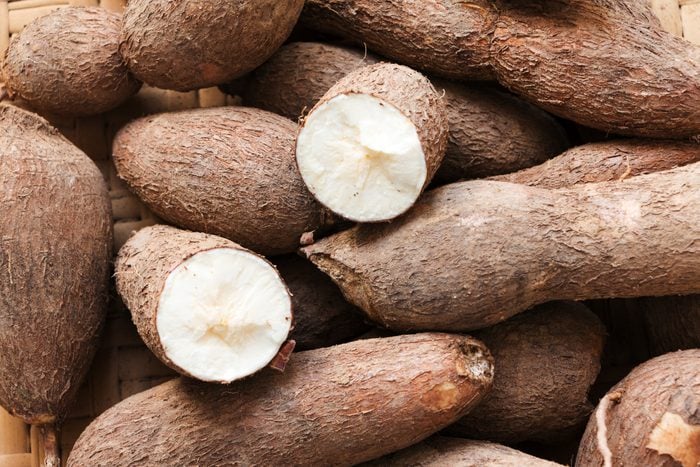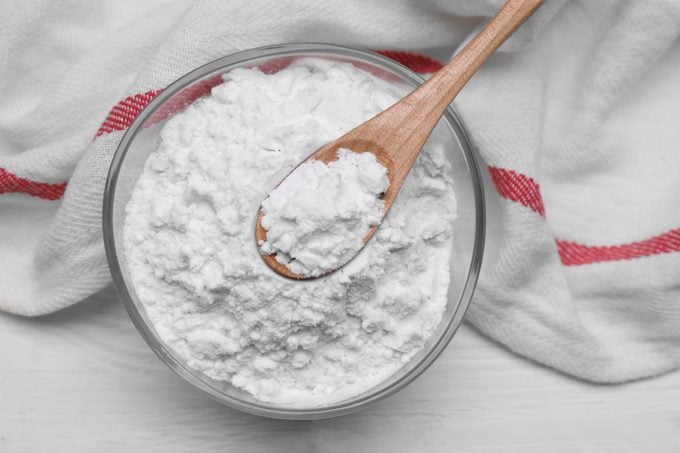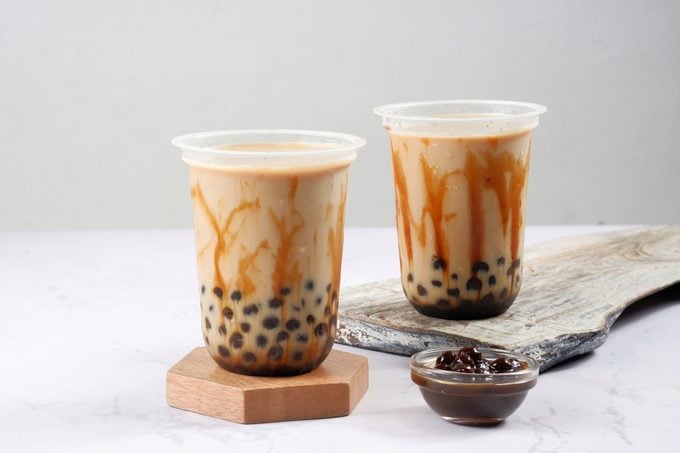What Is Tapioca and How Do You Cook with It?
Updated: Nov. 28, 2023

Versatile and naturally gluten-free, tapioca is a handy ingredient more home cooks should know about.
If you’ve sipped a colorful bubble tea, or boba, you’ve had tapioca: it’s the ingredient in the tiny, chewy balls at the bottom of the cup. You’ve probably also eaten a delicious baked good made with tapioca, and maybe spooned up a sauce that contained tapioca. The versatile ingredient is a bit of a chameleon. But just what is tapioca, anyway? Here’s why it’s worth keeping in your pantry.
What Is Tapioca?
Tapioca is a starch derived from the root of the cassava or yucca plant, commonly found across South America and Africa. Tapioca is broadly used in cooking around the world and comes in many forms.
Tapioca flour is a finely ground starch used as a thickener in cooking, as well as in baking. Instant tapioca and tapioca flakes are a granular form of the starch, often used as a thick filling in desserts, as well as to add bulk to savory foods. Bubble tea drinkers might know tapioca pearls best: these balls of cooked tapioca starch are pleasantly chewy and gummy.
The Difference Between Tapioca Starch and Tapioca Flour

There’s actually no difference between tapioca starch and tapioca flour! The terms are (confusingly) used interchangeably. Some grains are milled in both flour and starch forms (like corn, for example, which is yellow and gritty as a flour and white and light as a starch), but tapioca is extremely starchy by nature. Whether labeled “flour” or “starch,” ground tapioca is finely milled, airy, light and white.
What does tapioca taste like?
Tapioca is extremely mild and nearly flavorless, which contributes to its culinary versatility. Whether added to savory foods or desserts, tapioca will take on the seasonings of any dish.
Is tapioca gluten-free?
Yes, all forms of tapioca are naturally gluten-free. If you’re very sensitive to gluten, check the packaging to see whether the tapioca was processed in a facility that also handles wheat, which may cause cross-contamination.
How to Cook with Tapioca

Famously, tapioca pearls are used in bubble tea. Tapioca pearls are also delicious in desserts, like this cozy old-fashioned tapioca pudding, where their soft chew is comforting and satisfying. Instant tapioca makes an even quicker pudding, reminiscent of rice pudding. Served with stewed fruits, like in this Apple Honey Tapioca Pudding recipe, the tapioca thickens the cooking juices, turning them into a silky sauce.
Instant tapioca can be stirred into soups or stews as a thickener. Both instant tapioca and flakes add bulk to meatballs or other ground meats.
Tapioca flour is a useful ingredient to keep in the pantry, especially for gluten-free baking. You can even use tapioca in a homemade all-purpose gluten-free flour blend. Tapioca flour is also a versatile thickener, useful for soups, sauces or fruit pies.
What Is a Substitute for Tapioca?
While pearl tapioca is fairly unique, other forms are tapioca can be substituted fairly easily. You can replace tapioca flour or starch with any other starch, like corn or potato. If using tapioca flakes or instant tapioca as a thickener, substitute another starch, or use wheat or rice flour. If making a pudding with tapioca, try arborio rice instead, which takes longer to cook but has a pleasingly creamy texture.
Storing Tapioca
All forms of tapioca should be stored at room temperature. Tapioca pearls will crumble if kept in the refrigerator. Keep out of direct sunlight, in a cool, dry place. Since tapioca is so starchy, it won’t get rancid as whole grains do.
